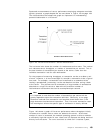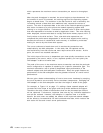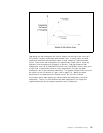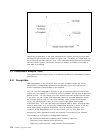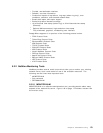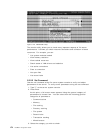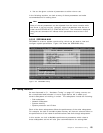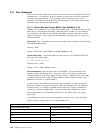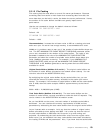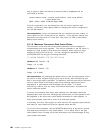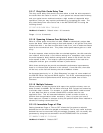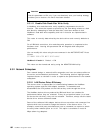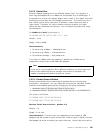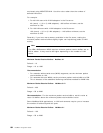
5.3.1.2 Block Size (NetWare 4.1)
In all versions of NetWare prior to NetWare 3.X, the block allocation unit was
fixed at 4KB. In NetWare 3.X, larger allocation units are possible, but they result
in a lot of unused disk space at the end of files. For example, if the last part of a
file took up 1KB of a 16KB block, the remaining 15KB was wasted.
Sub-allocation is implemented in NetWare 4.1 to overcome the problem of
wasted disk space due to under-allocated disk blocks. Sub-allocation allows
multiple file endings to share a disk block. The unit of allocation within a
sub-allocated block is a single sector (512 bytes). This means that as many as
128 file ends can occupy one 64KB block. Using sub-allocation, the maximum
loss of data space per file is 511 bytes. This would occur when a file has one
more byte than can be allocated in a full 512-byte sector.
NetWare 4.1 defaults to a block size other than 4KB during the creation of
volumes. It determines default block sizes based on volume size rather than on
performance criteria. This is done in order to conserve server cache memory.
The default sizes are shown in the following table.
Table 18. Default Block Sizes Based on Volume Size
Volume Size Default
Less than 32MB 4KB
32 to 150MB 8KB
150 to 500MB 16KB
500 to 2000MB 32KB
2000MB and up 64KB
Recommendation:
IBM recommends a 64KB block size for all NetWare 4.1
volumes. The larger 64KB allocation unit allows NetWare to use the disk
channel more efficiently by reading and writing more data at once. This results
in faster access to mass storage devices and improved response times for
network users.
5.3.1.3 Turbo Fat Indexing
The file allocation table (FAT) is an index. The table entries point to the
allocated disk blocks in which a file is located. When a file is opened for reading
or writing, the FAT is read to find the actual location of the file on the disk. To
improve performance, the entire FAT is cached in server memory, allowing the
server to quickly access disk allocation blocks of the data volume.
When a file exceeds 64 blocks, NetWare creates a Turbo FAT index that groups
all the FAT entries corresponding to the file. Subsequently, the file is accessed
through a Turbo FAT. Upon completion, the Turbo FAT index is closed but not
flushed from server memory. Instead, an aging process starts, and after a
specified period, the Turbo FAT index is flushed from memory.
The time that the index is allowed to remain in main system memory can be
varied using the set command in the AUTOEXEC.NCF file as follows:
SET TURBO FAT RE-USE WAIT TIME=VALUE
Chapter 5. Performance Tuning 177



